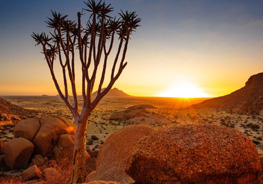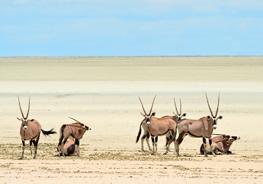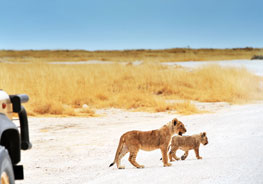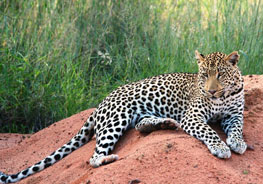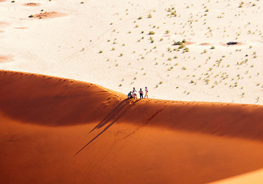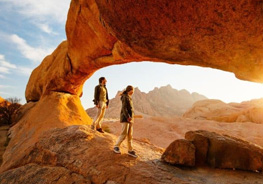Call Us
8:00am - 17:00PM
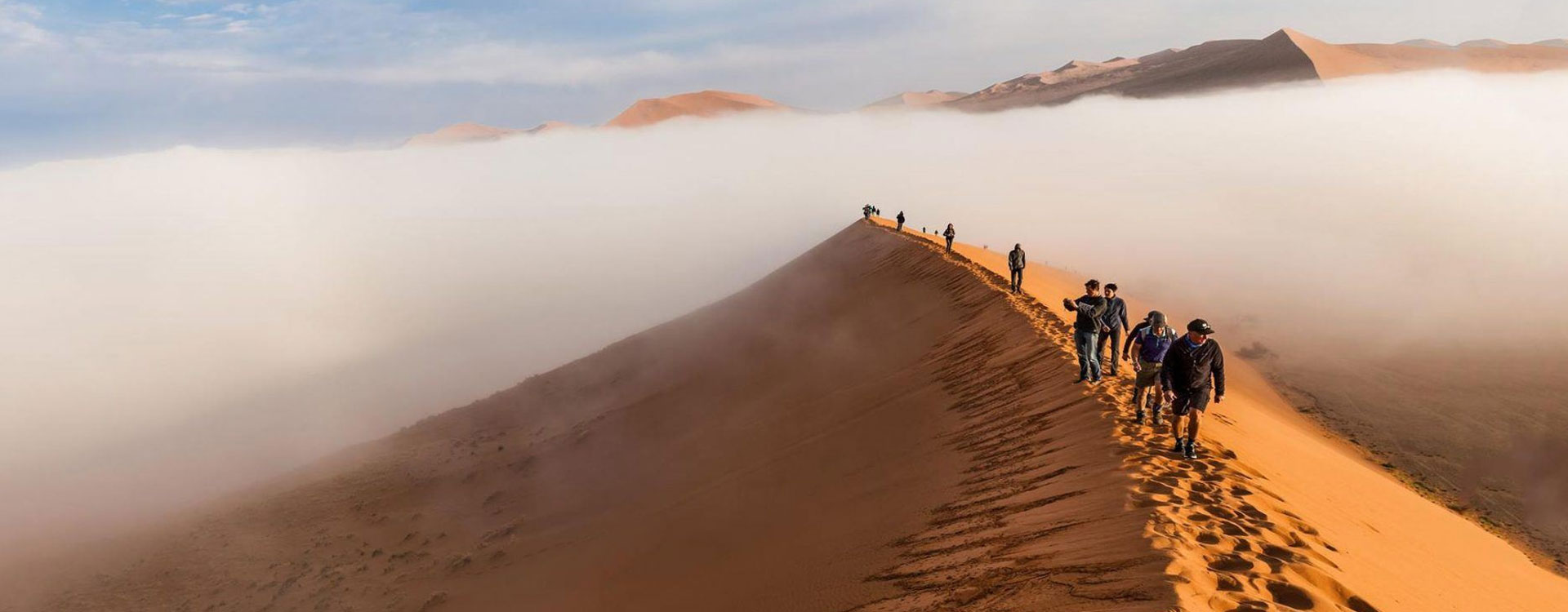
Namibia Tourism
Namibia
Tourism
A unique fusion of wildlife, stunning scenery and varied cultures, is what defines Namibia Tourism. Being located on the southwest coast, this country has emerged as a leading tourist destination in Africa receiving over a million tourists every year.
But why do such large people prefer Namibia? Is it because of its large dunes or the desert-adapted animals? Let’s find out what’s secrets Namibia Tourism holds.
Map of Namibia
Popular Tourists Destination
Cultural Tourism In Namibia
Adventure Tourism In Namibia
Food In Namibia
Namibia Tourism On Its Economy
Sustainable Tourism in Namibia
Future Of Namibia Tourism
Highlights Of Namibia
Responsible Travel Tips
Namibia Tourism Guide
Namibia Tourism Is Waiting To Serve You!
Map of Namibia
Popular Tourists Destination
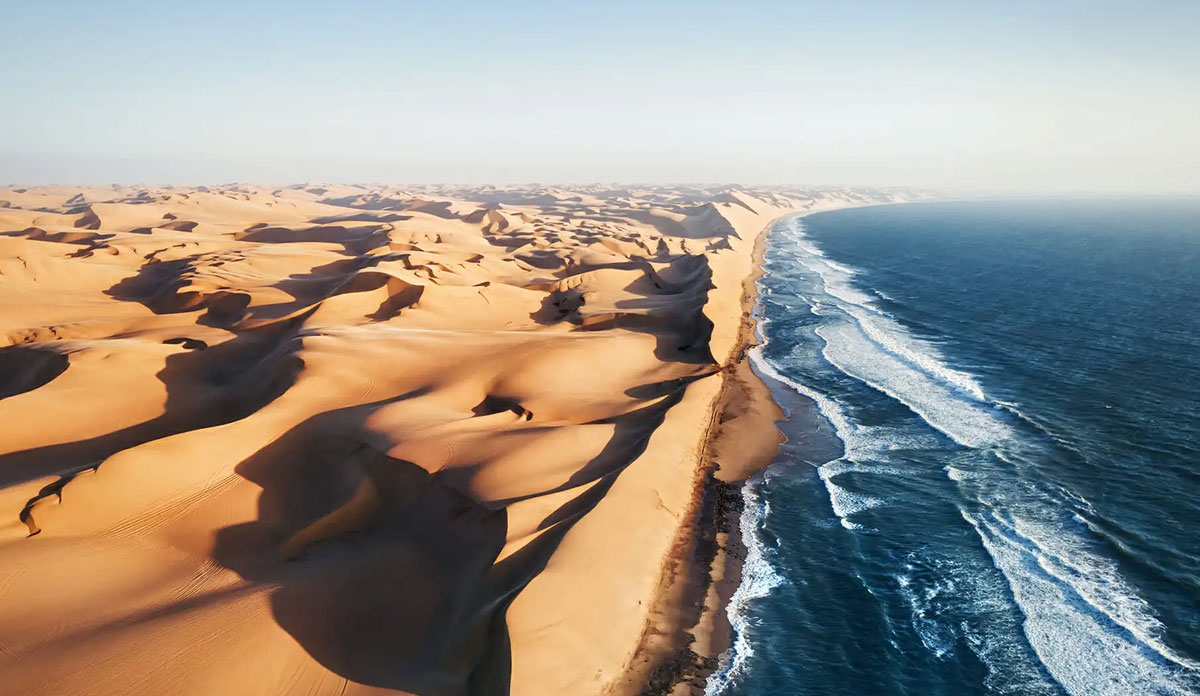
Etosha National Park
If you’re going on a Namibia Safari, you can’t skip Etosha National Park. After the Naim -Kfutu National Park, this is the second largest game reserve in Namibia. And, this is the most accessible park, in Namibia.
When it comes to wildlife- sighting, this park is home to a large abundance of wildlife. This is where you can spot a diverse range of wildlife including lions, leopards, black and white rhinos, giraffes and several antelope species.
- Note - To get a better game-viewing experience, visit Etosha National Park in the dry season (May to October)
- Entrance fees - $80 per person/per day
Sossusvlei – The Endless-era of Red Sand Dunes
Imagine a large starched San Dunes which are 325 high. This is what you can experience in this desert. Located in the southern part Namib Desert. This the probably the best picturesque destination you will ever find anywhere on a Namibia Tour.
The Skeleton Coast is the largest world biggest ship grave-yards, where you will see how a desert has been submerged into a sea. Certainly, one of the best places to see on a Namibia Safari Tour, you can enjoy desert tours, scenic flights, and sea kayaking. Most of the visitors to this skeleton coast visit Cape Cross Seal Reserve. This reserve has historical importance. Because this is the landing spot of the First Europeans who visited the Namibian Coast. The Namib desert is 40 million years old, and it is spread across Angola and South Africa. This pristine desert resembles a gold platted sand rolling to an endless horizon. This oldest desert lets you experience adventure sports like quad biking. And not to mention the spectacular view of the night in this desert will definitely make you an Astrophotographer. You can also take part in a balloon safari over this desert to get a bird's view of this golden desert. If you’re for a hiking adventure, then the Fish River Canyon is the place to go. This is the second largest canyon after the Grand Canyon in the U.S. Measuring 160 km in length and 27 km in width, the Fish River Canyon is the most dramatic landscape that you can discover on a Namibia Safari. The Fish River Canyon is the best of both worlds, perfect for adventure junkies and best for nature admires. Namibia is a country rich in cultural heritage, and cultural tourism is becoming increasingly popular among travellers who seek to learn more about the country's diverse ethnic groups and traditional ways of life. Here are some of the cultural tourism experiences that you can enjoy in Namibia Safari Tours. The Himba are a semi-nomadic people who live in the northwestern part of Namibia. They are known for their distinctive appearance, as they cover their skin with a mixture of ochre and animal fat to protect themselves from the harsh desert climate. Visiting a Himba village will give you an insight into their way of life, traditions and customs. The San people, also known as Bushmen, are the indigenous people of Namibia. They have a rich cultural heritage, and you can learn more about their way of life, language, hunting and gathering techniques, and traditional dances by visiting a San village. The Herero people are known for their colourful Victorian-style dresses that they wear on special occasions. They are also famous for their cattle farming, and you can visit a traditional Herero village to learn more about their culture. Namibia has many cultural festivals throughout the year, and attending one of these events is a great way to experience the country's diverse cultures. The Windhoek Carnival, the Himba Festival, and the Ongwediva Annual Trade Fair are just a few of the popular festivals in Namibia. Several museums in Namibia showcase the country's cultural heritage. The National Museum of Namibia in Windhoek has a collection of artefacts, photographs, and documents that reflect the country's history and cultural diversity. Namibia is an adventure playground for sure, and it lets experience adventure activities like hiking, canoeing, sky diving, sandboarding and quad-driving. If you’re into adventure, hiking in the second-largest Canyon in the world would be a remarkable experience. The total distance of the hike is 86 km, and depending upon your fitness level it takes 4 to 7 days to complete it. Hiking in the Fish River CanyonSkeleton Coast – where the dunes meet the sea
Namib Desert – the oldest desert in the world
The Fish River Canyon
Cultural Tourism In Namibia
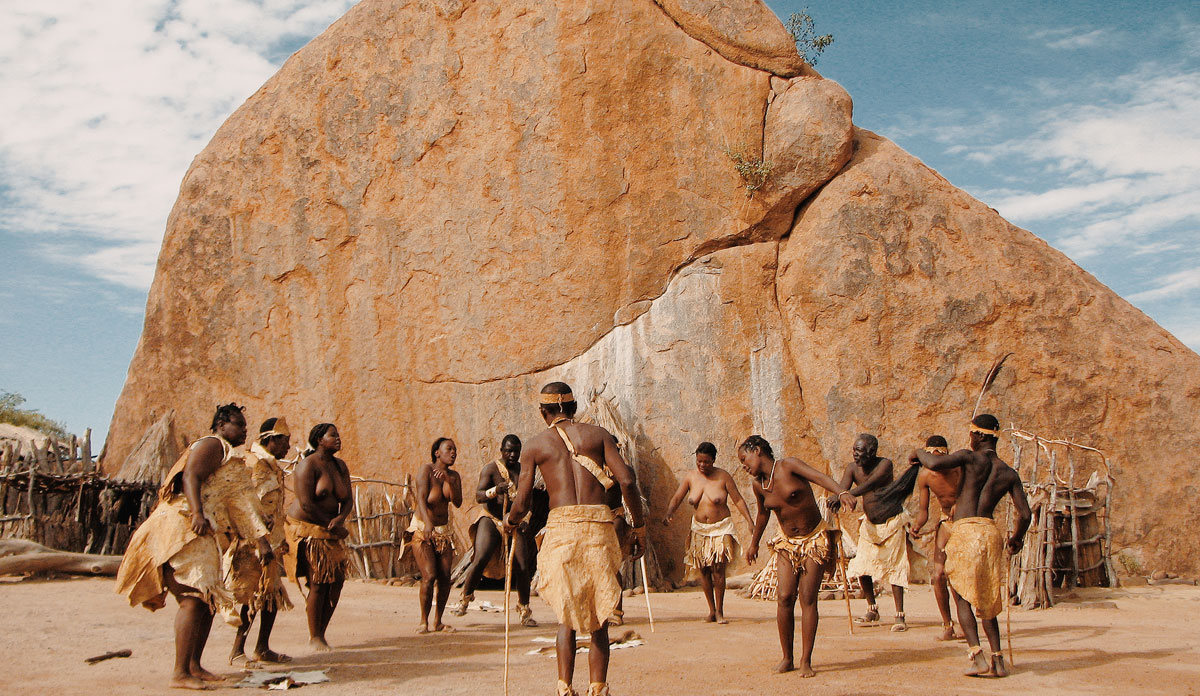
Visit a Himba Village:
Explore the San Culture:
Visit the Herero People:
Attend Festivals:
Visit Museums:
Adventure Tourism In Namibia
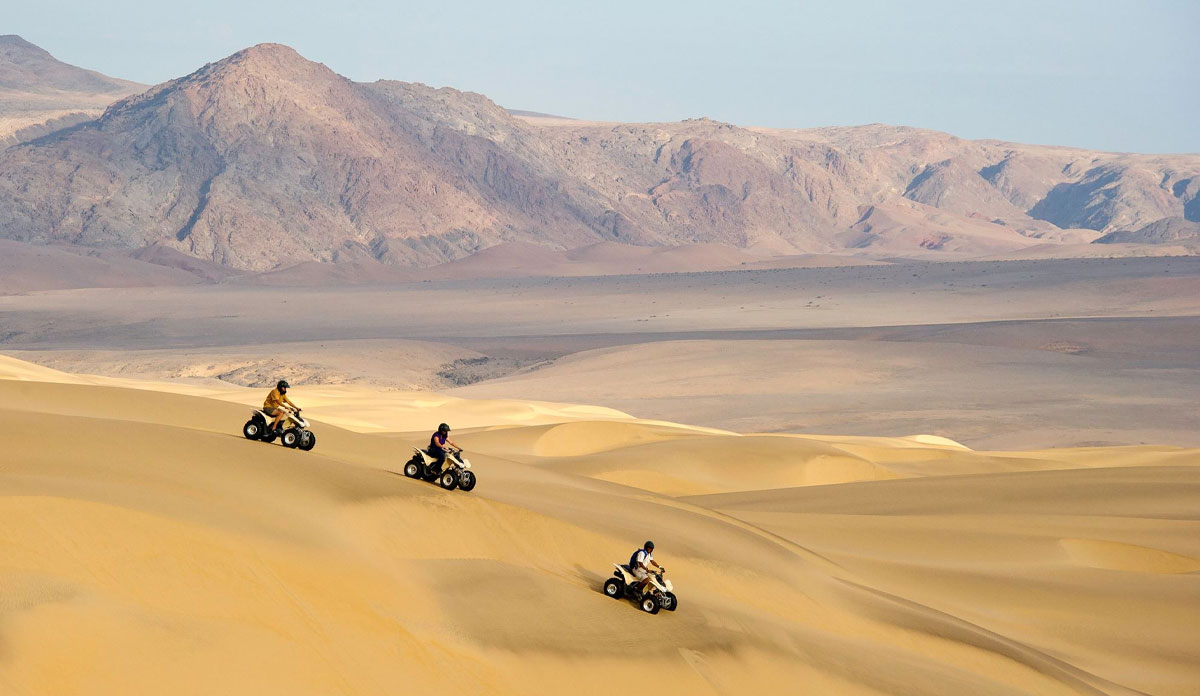
Hiking in Fish River Canyon
The Fish River Canyon hike is an unguided hike, you have to show a medical certificate for verification before the hike.
Another multi-day hike in Namibia is Naukluft Trail. The trail is 120 km long and takes nearly 8 days to complete. This trail is open for hiking between 1st March and 31st October.
Canoeing in the Orange River
Namibia is much more than just the deserts, it has some great rivers like the Orange River, where you can go for a canoe ride. Canoe trips can last up to 4-5 days depending upon how much you want to spend.
Along with a canoe ride, here you have an option for fishing, too. Canoeing in Orange River is safe and can be done as a part of your Namibia Safari Packages and with an expert guide.
Sandboarding – a new way to experience the dunes
Sandboarding is the best adventure Activity In Namibia. Mountain of Sands, located near the coastal town of Swakopmund, provides the best Sandboarding experience.
Here you have two options to choose from sand-boarding lie-down boarding and stand-up boarding. And, between these two, the stand-up boarding is more challenging. For this need to have some prior experience, before you start this adventure, but if you don’t have one, don’t worry, our guide will instruct you on every step.
Skydiving – the ultimate Namibia Adventure
Just imagine, falling towards Earth at 220 km/h, seeing the high tides of the Atlantic Ocean, and crashing into the dunes! There can be no better way to get an aerial view of desert landscapes and the ocean than skydiving.
This free fall from 3000 meters lasts for 30 seconds and it is completely exhilarating.
Surfing in the Atlantic Ocean
The coast of Namibia offers the best surfing experience in Namibia, and the surfing experience in Namibia can be compared to the surfing experience in Brazil.
The coastal town of Swakopmund is the perfect choice for surfing in Namibia. In Swakopmund, the best choice is Nordstrand, near Vineta Point.
Another good choice is Tiger Reef, located at the mouth of the Swakop River. Best time for Surfing is April and May.
Food In Namibia
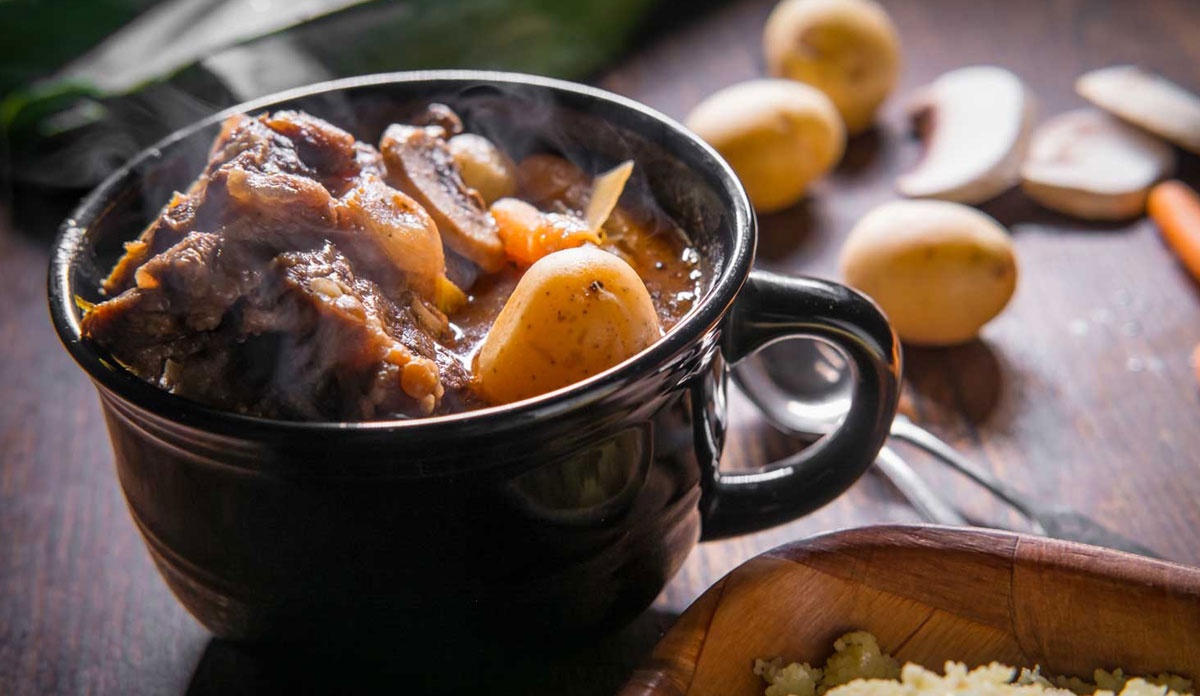
A perfect blend of indigenous traditions country’s vibrant colours can be found in Namibia's Food. On your Namibia Tour, it is sure that you’re going to taste Africa’s most diverse and unique cuisine.
Here are some of our most traditional foods that must need to try in Namibia.
Braai:
Braai is the Namibian version of a barbecue. It involves grilling various types of meat, such as beef, chicken, and lamb, over an open flame.
Kapana:
Kapana is a popular street food in Namibia. It consists of grilled or barbecued beef, often served with onions, tomatoes, and chilli peppers.
Mopane Worms:
Mopane worms are a traditional delicacy in Namibia. These caterpillars are dried and then fried and are often eaten as a snack.
Potjiekos:
Potjiekos is a stew that is cooked slowly in a cast-iron pot over an open fire. It typically contains meat, vegetables, and spices.
Biltong:
Biltong is a type of dried meat that is popular in Namibia. It is usually made from beef, but can also be made from game meat.
Oshikundu:
Oshikundu is a traditional Namibian drink made from fermented millet. It is slightly sour and has a milky texture.
Tafel Lager:
Tafel Lager is a popular beer in Namibia. It is a light lager that is brewed locally.
Amarula:
Amarula is a cream liqueur that is made from the fruit of the marula tree, which is native to Namibia. It has a sweet, caramel-like flavour and is often served over ice.
Namibia Tourism On Its Economy
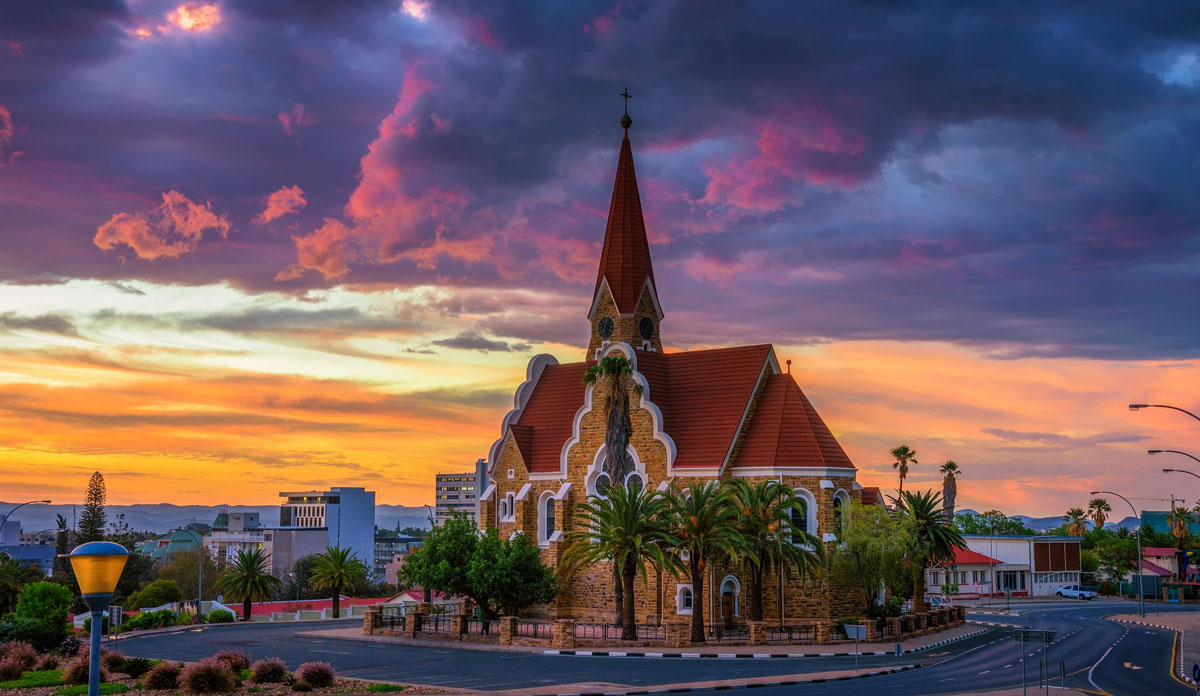
According to the data of the World Travel and Tourism Council (WTTC), 14.7% of Namibia’s GDP is contributed by Namibia Tourism. And it generated 15.4 % employment (nearly 100,000 Namibians) in 2019. And, Namibia Tourism is also one of the most competitive sectors in the world.
If you exclude neighbouring countries, most of the tourists that come to Namibia are from the U.S.
If you want to know more about Namibia's Tourism and economy, visit the check out the following official sites.
Namibia Tourism Board
Ministry of Environment, Forestry and Tourism
Sustainable Tourism in Namibia
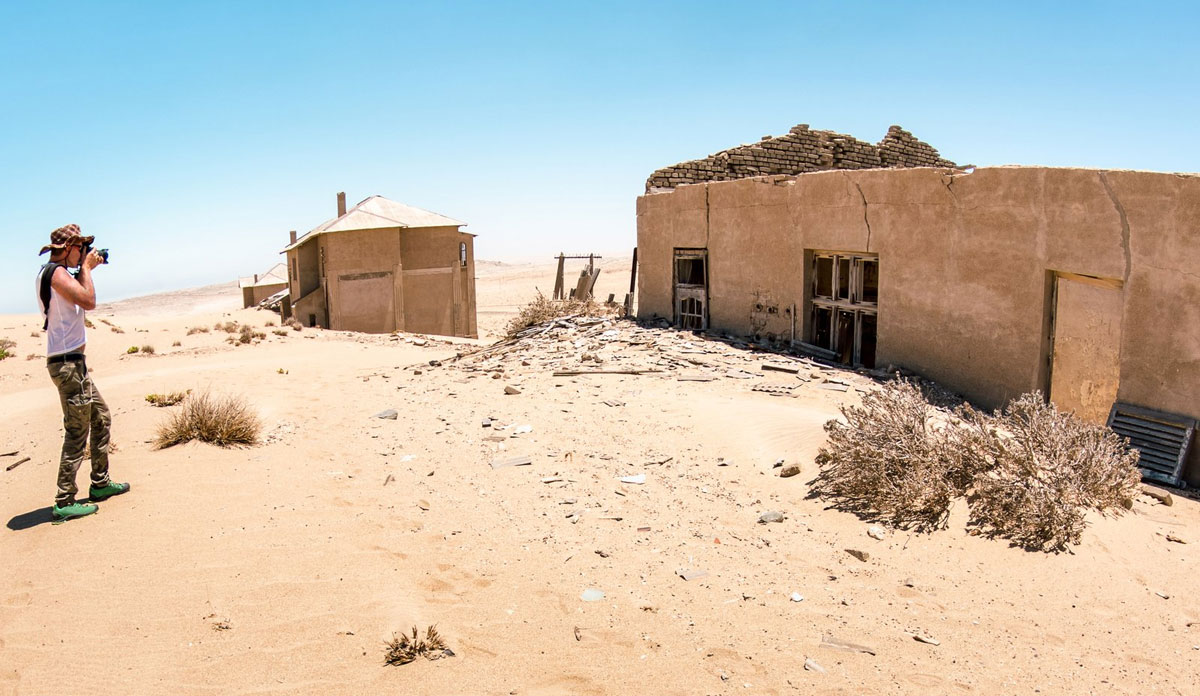
Namibia has set an example of being the leader, of empowering local communities to protect their natural resources for conservation and tourism. This country has incorporated three main practices to support sustainable tourism-
- Environment–friendly operations
- Support for the protection of cultural and natural heritage
- And improving the economic standard of local people
Namibia has also implemented various measures to promote responsible tourism practices, such as limiting the number of tourists allowed in certain areas, promoting responsible behaviour around wildlife, and encouraging visitors to reduce their impact on the environment by using eco-friendly practices.
Namibia's sustainable tourism efforts have been recognized globally, with the country consistently ranking high in various sustainable tourism indexes. These efforts not only benefit the environment and local communities but also contribute to the long-term viability of the Namibia Tourism Industry.
Future Of Namibia Tourism
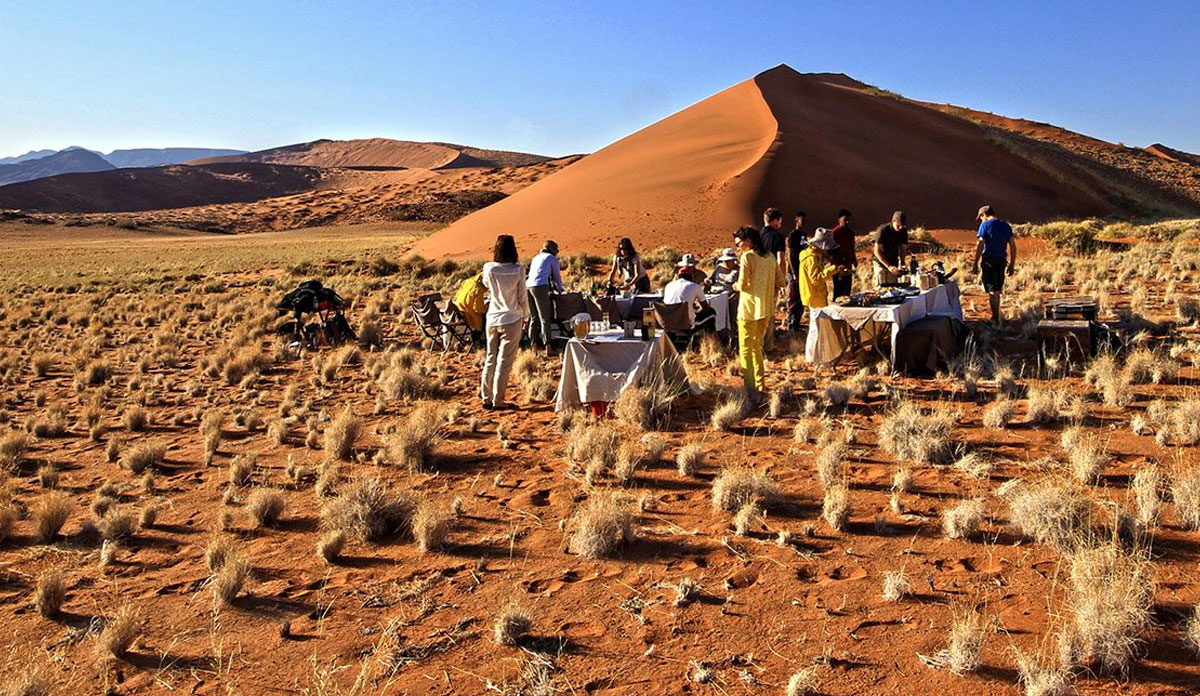
The government of Namibia has taken several steps to promote tourism in the country. Some of these initiatives include:
Marketing and promotion:
The Namibian Tourism Board (NTB) is responsible for promoting tourism in Namibia. The NTB has launched various campaigns both locally and internationally to promote the country's tourist attractions. The campaigns are aimed at showcasing the diverse culture, wildlife, natural beauty, and adventure tourism opportunities that Namibia has to offer.
Infrastructure development:
The government has invested in the development of tourism infrastructure such as airports, roads, and accommodation facilities. This has made it easier for tourists to access the country and move around to various attractions.
Policy and regulatory framework:
The government has put in place policies and regulations that promote sustainable tourism development. These policies are aimed at ensuring that tourism benefits the local communities, preserves the environment, and promotes cultural heritage.
Investment incentives:
The government has provided incentives such as tax breaks and subsidies to encourage private investment in tourism. This has led to the development of new tourism facilities such as hotels, lodges, and resorts.
Highlights Of Namibia
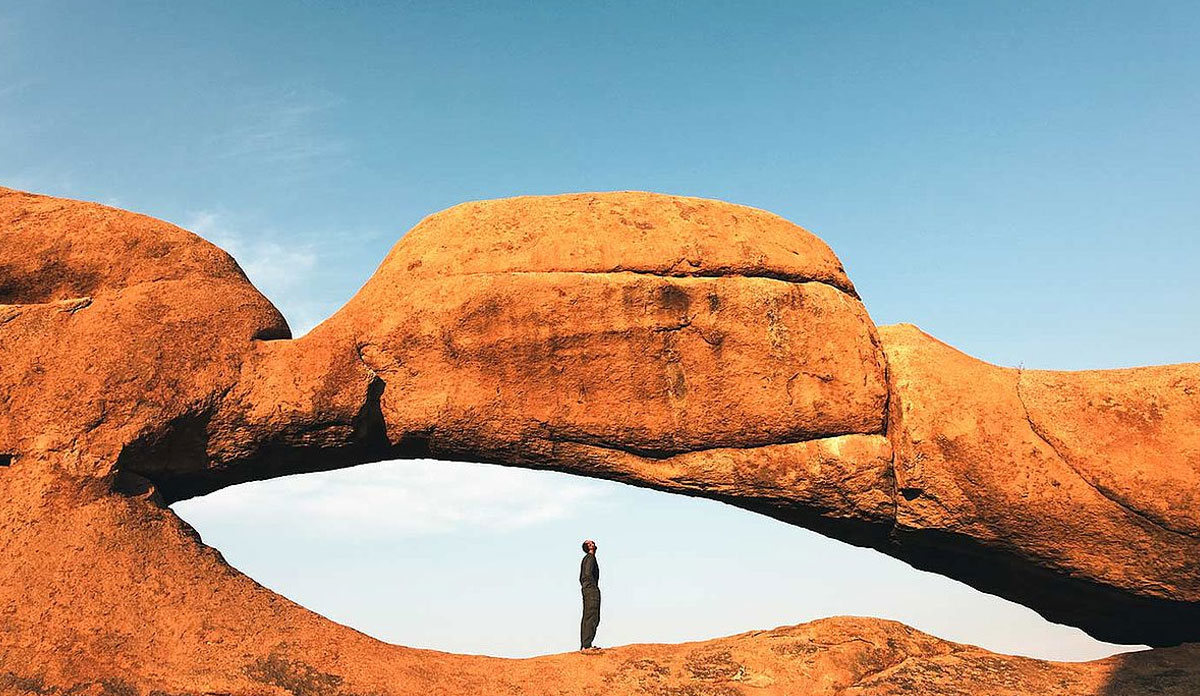
Namibia is a beautiful country in southwestern Africa with a wide range of attractions for tourists. Here are some highlights of Namibia Tourism:
Namib Desert:
Namibia is home to the Namib Desert, which is considered the oldest desert in the world. The red dunes of Sossusvlei are one of the most popular Attractions In Namibia.
Etosha National Park:
Etosha National Park is one of Africa's largest game reserves and is home to a wide range of wildlife, including elephants, lions, giraffes, zebras, and rhinos.
Skeleton Coast:
The Skeleton Coast is a stretch of coastline along the Atlantic Ocean that is known for its shipwrecks and whale bones.
Swakopmund:
Swakopmund is a charming coastal town that is popular for its German architecture, beaches, and adventure activities like sandboarding and skydiving.
Fish River Canyon:
The Fish River Canyon is one of the largest canyons in the world, stretching for 160 km (100 miles) and reaching depths of up to 550 meters (1,800 feet).
Damaraland:
Damaraland is a rugged and remote region in Namibia that is home to unique wildlife like desert elephants and black rhinos, as well as ancient rock art sites.
Himba tribe:
The Himba tribe is an indigenous group in Namibia known for their distinctive red ochre body paint and intricate hairstyles. Visiting a Himba village is a great way to learn about their culture and traditions.
Kolmanskop:
Kolmanskop is a ghost town that was once a thriving diamond mining town. Today, it is a popular tourist attraction where visitors can explore abandoned buildings and learn about the town's history.
Caprivi Strip:
The Caprivi Strip is a narrow stretch of land in the northeast of Namibia that is bordered by Angola, Zambia, and Botswana. It is home to several national parks and is a great destination for wildlife viewing and birdwatching.
Responsible Travel Tips

It's important to remember that as travellers, we have a responsibility to minimize our impact on the environment and respect the local culture. Here are some tips for responsible travel for Namibia Tourism.
Respect the wildlife:
Namibia is home to some of the world's most amazing wildlife, including elephants, lions, and rhinos. When observing animals, make sure to keep a safe distance and avoid disrupting their natural behaviour. Don't touch, feed or approach wild animals and refrain from using flash photography as it can startle or harm them.
Choose sustainable accommodations:
Look for eco-friendly accommodations that promote sustainable tourism practices. If possible, choose accommodations that use renewable energy, recycle waste, and minimize water usage. This can also include supporting lodges that support conservation initiatives or protect local wildlife.
Support local businesses
Reduce waste
Namibia has a limited waste management system. To reduce waste, bring a reusable water bottle and shopping bag, and avoid using single-use plastics whenever possible. Properly dispose of any waste you generate, and consider participating in beach or park cleanups to help keep the environment clean.
Respect local cultures
Namibia has a diverse population, with many different ethnic groups and languages. Learn about local customs and practices, and respect them during your visit. This includes dressing appropriately and seeking permission before taking photos of people or their property.
Leave no trace
When exploring Namibia's natural landscapes, take care not to leave any trace of your visit. This includes properly disposing of trash, avoiding damage to plants or wildlife, and sticking to designated trails.
Namibia Tourism Guide

Here's a quick travel guide to Namibia Tourism that will help you in along in planning for a Namibia Safari.
When to Go:
Namibia has a desert climate, with hot and dry weather throughout the year. The Best Time To Visit Namibia is during the cooler months from May to September. During this time, the weather is mild, and the wildlife is more active.
Accommodation:
Namibia offers a range of accommodation options, from luxury lodges to budget-friendly guesthouses. Many lodges are located in remote areas and offer unique experiences, such as guided safaris and cultural activities. Camping is also popular, with campsites located in national parks and along major routes.
Transportation:
Namibia has a well-developed road network, making it easy to explore the country by car. Car rentals are available in major cities and towns. Public transportation is limited, with most locals using taxis or shared minibuses. Domestic flights are available, but they can be expensive.
Safety:
Namibia is a relatively safe country to travel to. However, it's important to take standard precautions, such as keeping your valuables out of sight, not walking alone at night, and being aware of your surroundings. It's also important to take precautions when driving, as roads can be remote and poorly maintained.
Visa Requirements:
Most nationalities can enter Namibia without a visa for up to 90 days. However, it's always best to check visa requirements before travelling.
Namibia Tourism Is Waiting To Serve You!
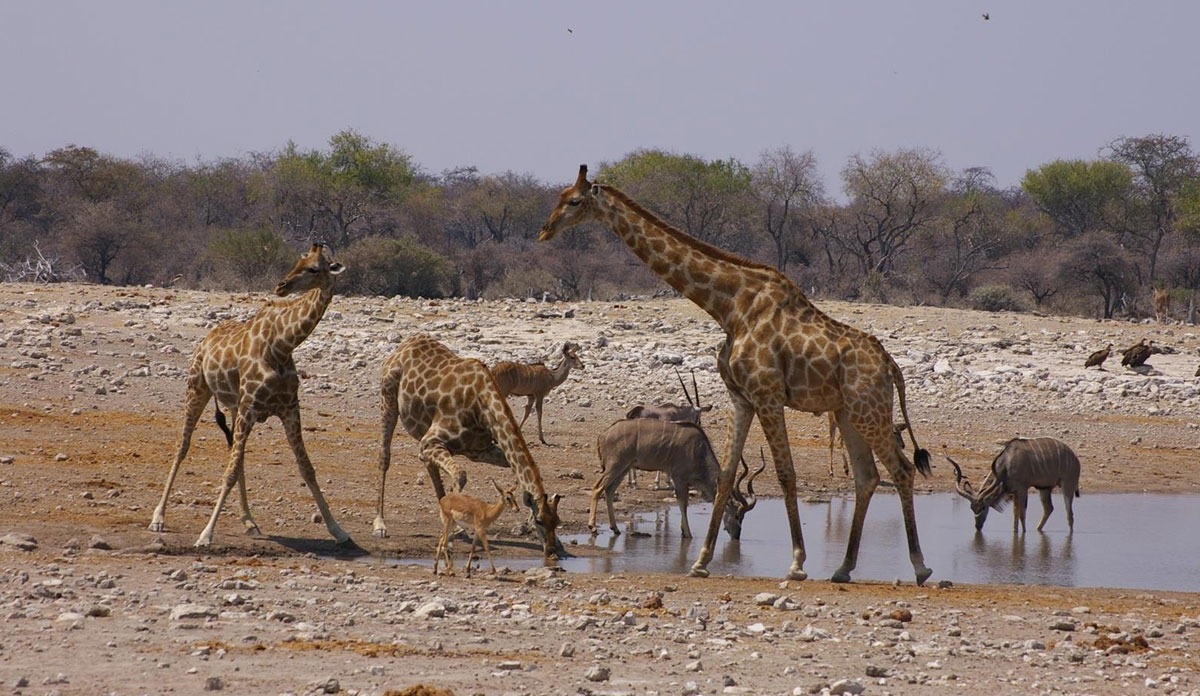
After reading all the above information, you must have known that Namibia Tourism is made to be explored. This is a country filled with captivating natural beauty and remote wilderness. Whether that’s around the watering holes of Etosha National Park, watching the desert-adapted elephants or sky diving near the skeleton coast Namibia Safari has all to offer.
Namibia
Tourism
Map of Namibia
Popular Tourists Destination
Cultural Tourism In Namibia
Adventure Tourism In Namibia
Food In Namibia
Namibia Tourism On Its Economy
Sustainable Tourism in Namibia
Future Of Namibia Tourism
Highlights Of Namibia
Responsible Travel Tips
Namibia Tourism Guide
Namibia Tourism Is Waiting To Serve You!
Related Namibia Travel Guide
We Think You’ll Love
Frequently Asked Questions
We Think You’ll Love
Namibia can be visited year-round, but the best time to visit is during the dry season, which runs from May to October. This is when wildlife is easier to spot as animals gather around watering holes, and the weather is mild and pleasant.
Some of the Top Attractions In Namibia include Sossusvlei, Etosha National Park, Fish River Canyon, Damaraland, Swakopmund, and Skeleton Coast.
It depends on your nationality. Citizens of some countries, such as the United States, Canada, and the United Kingdom, do not require a visa for stays up to 90 days. Other nationals may require a visa, so it's best to check with the Namibian embassy or consulate in your home country.
Namibia is generally considered a safe country to travel to. However, travellers should exercise the usual precautions such as not leaving valuables unattended and avoiding walking alone at night.
The currency in Namibia is the Namibian dollar (NAD). South African Rand (ZAR) is also widely accepted.
The official language of Namibia is English. However, many Namibians speak indigenous languages such as Oshiwambo, Otjiherero, and Khoekhoegowab.
The food in Namibia is heavily influenced by German and South African cuisine. Popular dishes include braai (barbecue), biltong (dried meat), and pap (maize porridge)..
The best way to get around Namibia is by car, either by renting a car or joining a guided tour. Public transportation is limited, and distances between attractions can be long.
Namibia has a desert climate with hot days and cool nights. Temperatures can vary widely between day and night, especially in the desert areas.
When visiting Namibia, it's important to pack light, comfortable clothing for hot days and cool nights, as well as sunscreen, a hat, and sunglasses. If you plan on going on a Namibia Safari, neutral-coloured clothing is recommended. Don't forget to bring a camera, binoculars, and a good pair of hiking shoes.
Namibia has a diverse population with a mix of indigenous peoples and immigrants from Europe and other African countries. The culture is heavily influenced by the German colonial legacy, as well as traditional African customs and traditions.
When visiting Namibia, it's important to respect local customs and traditions. It's considered polite to ask for permission before taking photos of people or their homes. It's also recommended to dress modestly and remove your shoes before entering someone's home.
The Nightlife In Namibia is relatively low-key, with most bars and clubs closing early. However, larger cities like Windhoek and Swakopmund have a few lively spots where you can enjoy live music, drinks, and dancing.
Namibia offers a wide range of adventure activities, including hiking, sandboarding, skydiving, hot air balloon rides, quad biking, and wildlife safaris.
Namibia is known for its commitment to sustainable tourism, with many eco-friendly tourism options available. These include eco-lodges, wildlife conservancies, and community-based tourism initiatives that support local communities and conservation efforts.
14.7%, Tourism in Namibia contributes around 14.7% of the total GDP of Namibia. Zambia Tourism also plays a major role in creating jobs and uplifting the local economy.
We are thrilled to help you plan your perfect safari holiday
We'd be delighted to help you with any questions you have about properties & safaris. Please fill in the form below so that we can help you create your perfect safari holiday.
Or
Contact Us
Feel free to give us a call or send us an e-mail:
Start Planning Your Tailored African Safari

Expert Safari Knowledge
With decades of expertise, we're your trusted safari guides, ensuring every moment exceeds your expectations.

Tailor-made African Safaris
Tailored to your preferences, our African Safaris guarantee an adventure perfectly suited to your desires.

Long-term Relationships
Our enduring partnerships across Africa provide exclusive access and authentic experiences.

Carefree Travel
Leave your worries behind and accept carefree travel with Falcon Safaris, where every detail is handled to perfection.
Our Travelers Say

We travelled with Falcon Safaris in Zimbabwe and Botswana for 16 days. Falcon designed a wonderful trip with private guide to the most interesting sites in both countries. The organization of the whole trip was excellent, flights within the country, accommodation and activites. The guides were very knowledgable and told us a lot about the countries, their history, people, economy and much more. We visited the Great Zimbabwe Ruins, the Victoria Falls Tour and a number of national parks in both countries.
Rhino tracking was a real adventure! We had tremendous further game drives and saw very many animals - we did the Big Five. We had much more Victoria Falls Activities than planned and enjoyed very much.We strongly recommend Falcon Safaris to everyone planning a trip to Southern Africa and East Africa.
Wonderful trip to Zimbabwe and Botswana with excellent organization and very competent guides

Our Consultant Vimbai was very helpful and accommodating. We stayed at the Elephant hills hotel which was nothing short of amazing.Our activities included a helicopter flight, dinner cruise as well as a morning game drive. All the activities were absolutely amazing.
Exceptional!

We worked with Gertrude to schedule and organize everything and she did an excellent job. I asked a lot of questions via e-mail and she answered everyone in a timely helpful manner. Our guide at Victoria Falls was also great. He met us at the airport, provided a thoughtful tour of the Falls and got us to our next guide in Botswana. Our lodgings at River View Lodge were just as described- very comfortable and excellent food. All the staff were so pleasant and helpful. If I had to do it again I would arrange a morning boat ride as well. We only did the sunset boat rides and they were the high point of our entire trip- we saw so many animals and our guide was very knowledgeable. Just a great experience. Our lodgings at Oddball's Enclave was rustic and we loved it. So great to disconnect from the world for a bit. Leo, our guide, was the best - got us out and about, saw fantastic wildlife and got back to camp safely each time. Doc manages the camp so well. This whole trip was planned and organized by Falcon Safaris and we could not have been happier.
Fabulous, well planned trip

Falcon safaris have given my the correct advice with excellent service. The only suggestion will be to work closer with the lodges to confirm bookings as soon as possible. We have booked and pay our deposit a year in advance. We have only receive our final convermation from Chobe Safari lodge a week before departure. I do realize its not within your controle but with limit alternatives and a group of 14 people it becomes an issue to find alternative accomodation if the booking was cancelled.
Excellent and efficient service
Explore Our Africa With Customize Your Tour
We love Africa's diversity and create amazing trips for you. With 30+ years of experience, we customize every trip just for you.

